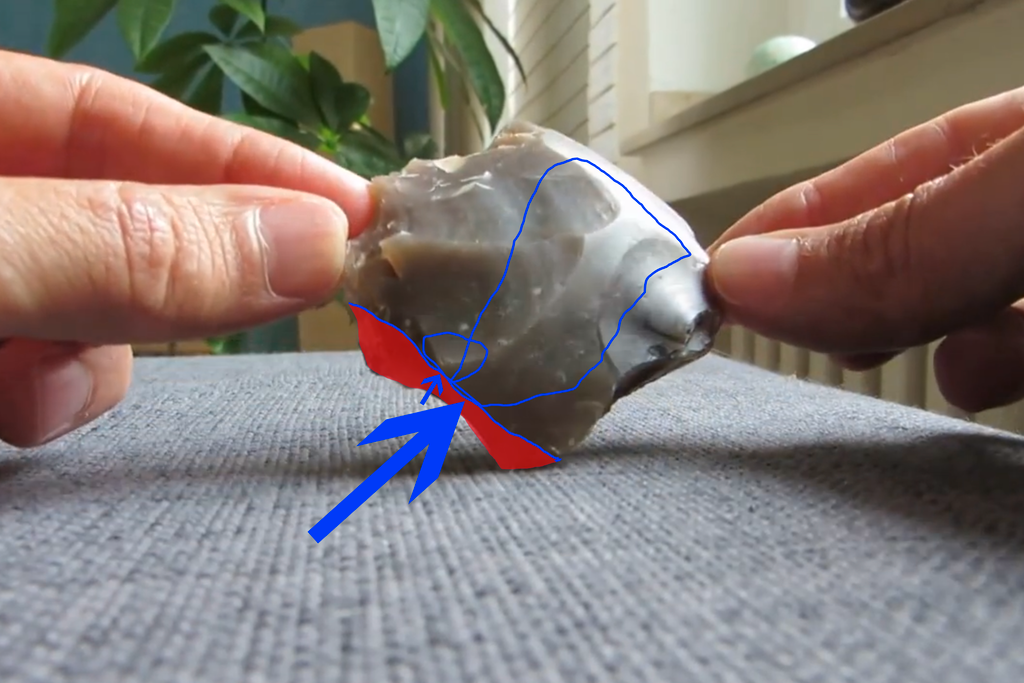Here is how I would tackle the piece in the video. Note that I would be using a copper bopper (smallish medium one)

So the first flake. This is about 12.75 seconds into the video. I would remove this flake from this face using the existing edge/platform. I would then remove some short clean up flakes and then remove one to the right of this flake to remove the remaining cortex. (see note at bottom)
Secondly I would do the following:

First I would remove the red area by removing short flakes. The platform is the area in red while the flakes would be removed from the opposite side of the piece. This would create a continuous platform.
Abrade continuous Platform
Next I would remove the short flake outlined in blue. This will help isolate the existing ridge for the larger flake.
Abrade again
Then I would remove the larger flake outlined in blue.
Those two examples should dramatically reduce the "turtle back" shape and make it more manageable.
Note: I would only use this existing edge if I was using a copper bopper, I personally do not think antler would react well to the existing edge, and I personally do not have enough experience in other percussors to say how they may react.